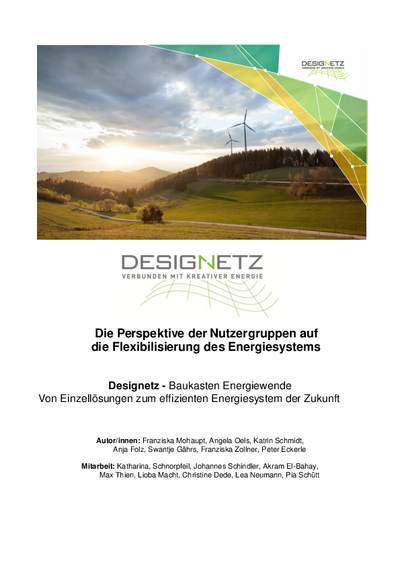The perspective of the user groups on making the energy system more flexible
The Designetz project demonstrates how to ensure greater flexibility in the demand for electricity and heat and how to integrate appropriate technical solutions into the energy system. However, not every technically possible potential can be realized in practice. It also depends on the players who adapt their energy consumption more closely to actual supply and thus "offer" flexibility. But which factors influence the acceptance of the necessary technical interventions, who finances them and who ultimately benefits from them? And what do promising value propositions look like?
The project has investigated these questions for households, industry and agriculture - the non-energy suppliers of flexibility – in selected demonstration projects of the Designetz project. The project wanted to find out how such flexibility offers can be designed technically and economically and how the actors can be involved in the process. To this end, the project team first identified influencing factors from the literature and through interviews with experts from the demonstration projects that could hamper or foster a flexibilization of the demand for electricity and heat.
A central goal was to show which acceptance factors have the greatest influence and which needs and requirements in the user groups are linked to these factors. To this end, the team conducted interviews, focus groups, workshops and surveys in several demonstration projects of Designetz. What all user groups had in common was that they were able to experience directly in their demonstration projects how flexibilization is technically implemented and what effects this can have on their everyday life or work processes. It became clear: Developing sustainable business models that promote flexibilization depends not only on the regulatory and economic framework conditions but also on the extent to which those who provide flexibility benefit from it.



